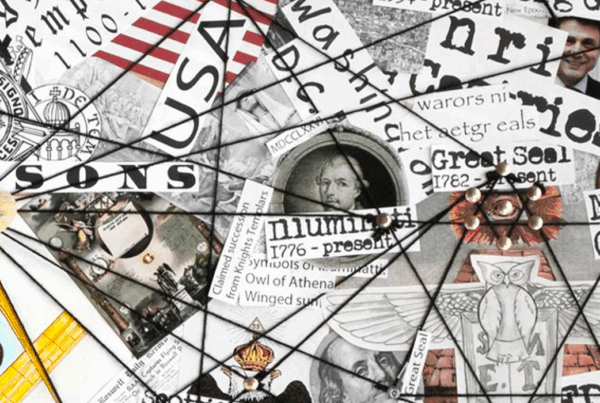Understanding the psychological, social, and digital mechanisms behind their appeal
One might think conspiracy theories only seduce a few gullible minds. Yet, they resonate widely, reach all social classes, and spread rapidly, especially online and via social media. Rather than judging, it is essential to understand why they are so appealing. What makes these narratives so convincing for some? What psychological, social, or digital mechanisms drive their spread?
A natural doubt… but inverted reasoning
Doubting is healthy. It is even the foundation of the scientific method. Great thinkers like Galileo or Darwin were accused of heresy or madness before their hypotheses were validated by evidence and then accepted by the scientific community. Rigorous doubt consists of questioning, verifying, and comparing.
Conspiracy theories, however, rely on systematic suspicion: one does not seek the truth but starts from the assumption that something is being hidden. The slightest strange detail becomes suspicious, and reasoning is inverted: it is no longer “I doubt until proven otherwise”, but “I am certain I am being lied to, and I look for elements to prove it.”
A human need for explanation and meaning
Faced with tragic, complex, or absurd events, our brains naturally seek causes. This is a survival strategy: to understand is to regain control. Conspiracy theories offer simple explanations for complex realities. Rather than accepting randomness, uncertainty, or injustice, they propose a structured narrative with clearly designated culprits and hidden intentions.
This can be reassuring: people sometimes prefer to believe in a hidden truth rather than face a destabilizing reality.
Example: The accident involving Lady Diana sparked numerous speculations. The idea of an organized conspiracy seemed more “emotionally acceptable” than that of a tragic accident.
A threatening worldview, fueled by feelings of exclusion
Some people perceive the world as fundamentally threatening. They feel ignored or looked down upon by institutions and become more inclined to believe that powerful groups are secretly working to harm the population. This “paranoid” lens fuels deep distrust toward authority figures: governments, scientists, journalists…
In this context, conspiracy theories become reassuring. They allow one to designate culprits but also to regain power over a reality perceived as unjust. This type of stance often relies on intuition rather than rational analysis: what one feels seems truer than what one can demonstrate.
Adhering to an alternative narrative also means joining those who “understand,” those who are not being manipulated. It is a way to distinguish oneself from the “herd,” to assert a form of independence against a world perceived as corrupt.
The weight of the social environment
Adherence to these narratives does not occur in a vacuum. It is heavily influenced by one’s real or virtual surroundings. On social media, algorithms amplify this phenomenon: by showing us mostly content similar to what we have already viewed, they create a confirmation bubble in which our ideas are constantly reinforced.
Charismatic figures also play a central role: “anti-system” influencers, conspiracy YouTubers, or pseudo-experts seduce with their confidence, provocative tone, and promise to reveal “the truth they’re hiding from us.” Their discourse often relies on emotion rather than facts.
This is highlighted by Brandolini’s Law, which states that “the amount of energy required to refute nonsense is much greater than that required to produce it.” This law explains how easily false ideas can spread on the internet, while correcting them requires significantly more time and effort.
Crisis periods: fertile ground
Crises — economic, health, climate, etc. — weaken our bearings. They generate uncertainty, fear, and a sense of loss of control. In these moments of vulnerability, conspiracy theories offer a ready-made explanatory framework. The Covid-19 pandemic was a striking example: faced with changing information, sometimes contradictory guidelines, and an anxiety-inducing climate, many found refuge in narratives that seemed more coherent — even if unfounded.
In summary
Adherence to conspiracy theories is not merely a matter of ignorance. It is explained by a complex mix of psychological, social, and digital factors:
– the need for meaning,
– distrust of institutions,
– peer pressure,
– the power of charismatic figures,
– platform algorithms,
– and emotions generated by crises.
Understanding these mechanisms helps us better protect ourselves against these narratives and better support those who adhere to them — without stigmatizing them.
To go further:
- Bronner, G. (2021). Cognitive Apocalypse. PUF
- Pierre, J.-B. (2020). Conspiracies: From Obsession to Manipulation. La Documentation française
- Lantian, A., et al. (2016). “Why do people believe in conspiracy theories?” Social Psychology, 47(1)
- Conspiracy Watch Observatory
- https://theoriesducomplot.be/






